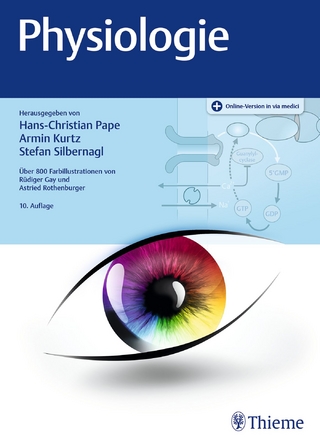
Electroencephalography
Oxford University Press Inc (Verlag)
978-0-19-750233-4 (ISBN)
- Lieferbar (Termin unbekannt)
- Versandkostenfrei innerhalb Deutschlands
- Auch auf Rechnung
- Verfügbarkeit in der Filiale vor Ort prüfen
- Artikel merken
Hans Lüders, MD, PhD is a Professor of Neurology at University Hospitals Cleveland Medical Center at Case Western Reserve University School of Medicine. Dr. Lüders' primary interest is epilepsy and clinical neurophysiology, developing the 4-dimensional classification of epilepsies and the pure semiological classification of epileptic seizure. He pioneered the use of subdural electrodes to evaluate patients with medically intractable epilepsy who are candidates for surgery and was the first to describe the basal temporal language area, the basal temporal alexia center, and the primary and supplementary negative motor area. Soheyl Noachtar, MD, is Professor of Neurology at the Ludwig Maximilians University of Munich (LMU-Munich) and the former Head of the Epilepsy Center of the University of Munich Hospital. He holds certification from the American Board of Clinical Neurophysiology and is a certified neurologist and psychiatrist by the German Chamber of Physicians. After a fellowship with Hans Lüders at the Cleveland Clinic Foundation, he was appointed chairman of the EEG department and a founding member and co-director of the Department of Epilepsy Surgery at the Bethel Epilepsy Center in Bielefeld, Germany. His research interests are clinical epileptology, seizure semiology, EEG, and epilepsy surgery. Jan Rémi, MD, is Professor of Neurology, the current Head of the Epilepsy Center of the University of Munich Hospital and the Vice-Chair of the Department of Neurology at LMU-Munich. He is a board certified neurologist and is the current head of the EEG Commission of the German Society for Clinical Neurophysiology. He was trained at the LMU Munich and had research stays in Parma, Italy and Coimbra, Portugal. His research interests are general epileptology, epilepsy surgery, EEG, seizure semiology, sleep, circadian rhythms, intensive care neurology, and brain death diagnostics.
Section 1: Introduction
Section 2: Fundamentals of EEG
2.1 Biological Basis of EEG
2.1.1 Source of EEG signal
2.1.1.1 Action Potentials
2.1.1.2 Synaptic Potentials
2.1.1.3 Spatial Arrangement of Electric Fields
2.1.2 Fundamentals of Rhythmic EEG Activity
2.2 Physical and Technical Fundaments of EEG
2.2.1 Technical Structure
2.2.1.1 Electrodes and Skin Contact
2.2.1.3 Differential Amplifier
2.2.1.4 Analog-to-Digital (AD) Conversion
2.2.1.5 Video
2.2.1.6 Electrical Safety
2.2.2 Technical Characteristics of EEG Recording
2.2.2.1 EEG Filters
2.2.2.1.1 Electrotechnical Basis of Filters
2.2.2.1.2 Phase Shift Due to Filters
2.2.2.1.3 Recommended Filter Settings
2.2.2.2 Editing the Digital EEG
2.2.2.2.1 Reformatting
2.2.2.2.2 Referential Montages
2.2.2.2.3 Bipolar Montages
2.2.2.2.4 Source Analysis and Mapping
2.2.2.2.5 Automatic Spike Detection
2.2.2.2.6 Automatic Seizure Detection
2.2.2.2.7 Long term EEG monitoring
2.2.3 Localization of EEG Potentials
2.2.3.1 Polarity Convention
2.2.3.2 Systematic Approach to Localization of EEG Potentials
2.2.3.3 Advantages and Disadvantages of Bipolar and Referential Montages
2.2.3.4 Localization of Asymmetries
2.3 Artifacts
2.3.1 Non-biological Artifacts
2.3.1.1 Electrode Artifacts
2.3.1.2 Ballistic Artifacts
2.3.1.3 Open Channel
2.3.1.4 External Artifacts
2.3.2 Biological Artifacts
2.3.2.1 Bulb Movements
2.3.2.2 Muscle Artifacts
2.3.2.3 Glossokinetic Artifacts
2.3.2.4 Eye Muscle Artifacts
2.3.2.5 ECG Artifacts
3 Clinical Electroencephalography
3.1 Recording of EEG
3.1.1 Default Settings for EEG Recording
3.1.2 Recording of Newborn EEGs
3.2 Activation Methods
3.2.1 Hyperventilation
3.2.2 Photic Stimulation
3.2.3 Sleep and Sleep Deprivation
3.2.4 Eye Closure
3.3 EEG Reading
3.3.1 Description of Abnormal EEG
3.3.1.1 Frequency
3.3.1.2 Amplitude
3.3.1.3 Localization
3.3.1.4 Shape and Temporal Behavior
3.3.1.5 Responsiveness / Reactivity
3.3.2 Reporting of EEG
3.4 EEG Classification
3.4.1 Normal Patterns
3.4.1.1 Physiological Wake EEG
3.4.1.1.1 Posterior Alpha-Activity
3.4.1.1.2 Central µ-Activity
3.4.1.1.3 Frontal Beta Activity
3.4.1.1.4 Temporal Theta Activity
3.4.1.2 Physiological Sleep EEG
3.4.2 Abnormal EEG
3.4.2.1 Degree of EEG Abnormality
3.4.2.2 State of Consciousness
3.4.2.3 Slow and Suppression
3.4.2.3.1 Background Slow (BS)
3.4.2.3.2 Intermittent Slow (IS)
3.4.2.3.2.1 Intermittent Rhythmic Slow (IRS)
3.4.2.3.2.2 Temporal Slow of the Elderly
3.4.2.3.2.3 Hypnagogic/Hypnopompic Theta-Delta-Bursts
3.4.2.3.2.4 Occipital Slow of Youth
3.4.2.3.2.5 Eye Closure Activity
3.4.2.3.2.6 Rhythmical Temporal Theta Bursts of Drowsiness
3.4.2.3.2.7 Rhythmical Midline Theta
3.4.2.3.3 Background Attenuation (BA)
3.4.2.3.4 Background Suppression (BSU)
3.4.2.3.5 Electrocerebral Silence (ECS)
3.4.2.4 Epileptiform Discharges (ED)
3.4.2.4.1 Spikes (SP)
3.4.2.4.2 Polyspikes (PSP) and Paroxysmal Fast (PF)
3.4.2.4.3 Benign Focal Epileptiform Discharges (BFED)
3.4.2.4.4 Spike-waves (SW)
3.4.2.4.5 Polyspike-Waves (PSW)
3.4.2.4.6 Three Hz Spike-Waves (3SW)
3.4.2.4.7 Slow-Spike-Waves (SSW)
3.4.2.4.8 Hypsarrhythmia (HYP)
3.4.2.4.9 Photoparoxysmal Response (PR)
3.4.2.4.10 Seizure Patterns (SEP)
3.4.2.4.10.1 Semiological Seizure Classification
3.4.2.4.11 Status Patterns (STP)
3.4.2.4.12 Differential Diagnoses of Interictal Epileptiform Discharges
3.4.2.4.12.1 Wicket Spikes
3.4.2.4.12.2 Asymmetry, Increased Background
3.4.2.4.12.3 Benign Epileptiform Transients of Sleep (BETS)
3.4.2.4.12.4 14 & 6 Hz Positive Spikes
3.4.2.4.12.5 6 Hz "Phantom" Spike and Wave
3.4.2.5 Periodic Patterns (PP)
3.4.2.5.1 Periodic Discharges
3.4.2.5.2 Periodic Epileptiform Discharges (PED)
3.4.2.5.3 Triphasic Waves (TW)
3.4.2.5.4 Burst Suppression (BUS)
3.4.2.5.5 Burst Attenuation (BUA)
3.4.2.6 Differentiation of Non-Convulsive Status Epilepticus and Encephalopathies
3.4.2.7 Special Patterns
3.4.2.7.1 Excessive Beta (EB)
3.4.2.7.2 Asymmetry (ASY)
3.4.2.7.3 Sleep-Onset-REM (SOREM)
3.4.2.8 Special Patterns in Stupor and Coma
3.4.2.8.1 Alpha-Coma (AK) and Alpha-Stupor (AS)
3.4.2.8.2 Spindle-Coma (SK) and Spindle-Stupor (SS)
3.4.2.8.3 Beta-Coma (BK) and Beta-Stupor (BS)
3.4.2.8.4 Theta-Coma (TK) and Theta-Stupor (TS)
3.4.2.8.5 Delta-Coma (DK) and Delta-Stupor (DS)
Appendix 1: EEG Guidelines of the American Clinical Neurophysiological Society (ACNS)
Appendix 2: Semiological Seizure Classification
References
| Erscheinungsdatum | 11.05.2023 |
|---|---|
| Verlagsort | New York |
| Sprache | englisch |
| Maße | 231 x 297 mm |
| Gewicht | 2223 g |
| Themenwelt | Medizin / Pharmazie ► Medizinische Fachgebiete ► Neurologie |
| Studium ► 1. Studienabschnitt (Vorklinik) ► Physiologie | |
| Sozialwissenschaften ► Pädagogik ► Vorschulpädagogik | |
| ISBN-10 | 0-19-750233-4 / 0197502334 |
| ISBN-13 | 978-0-19-750233-4 / 9780197502334 |
| Zustand | Neuware |
| Informationen gemäß Produktsicherheitsverordnung (GPSR) | |
| Haben Sie eine Frage zum Produkt? |
aus dem Bereich


